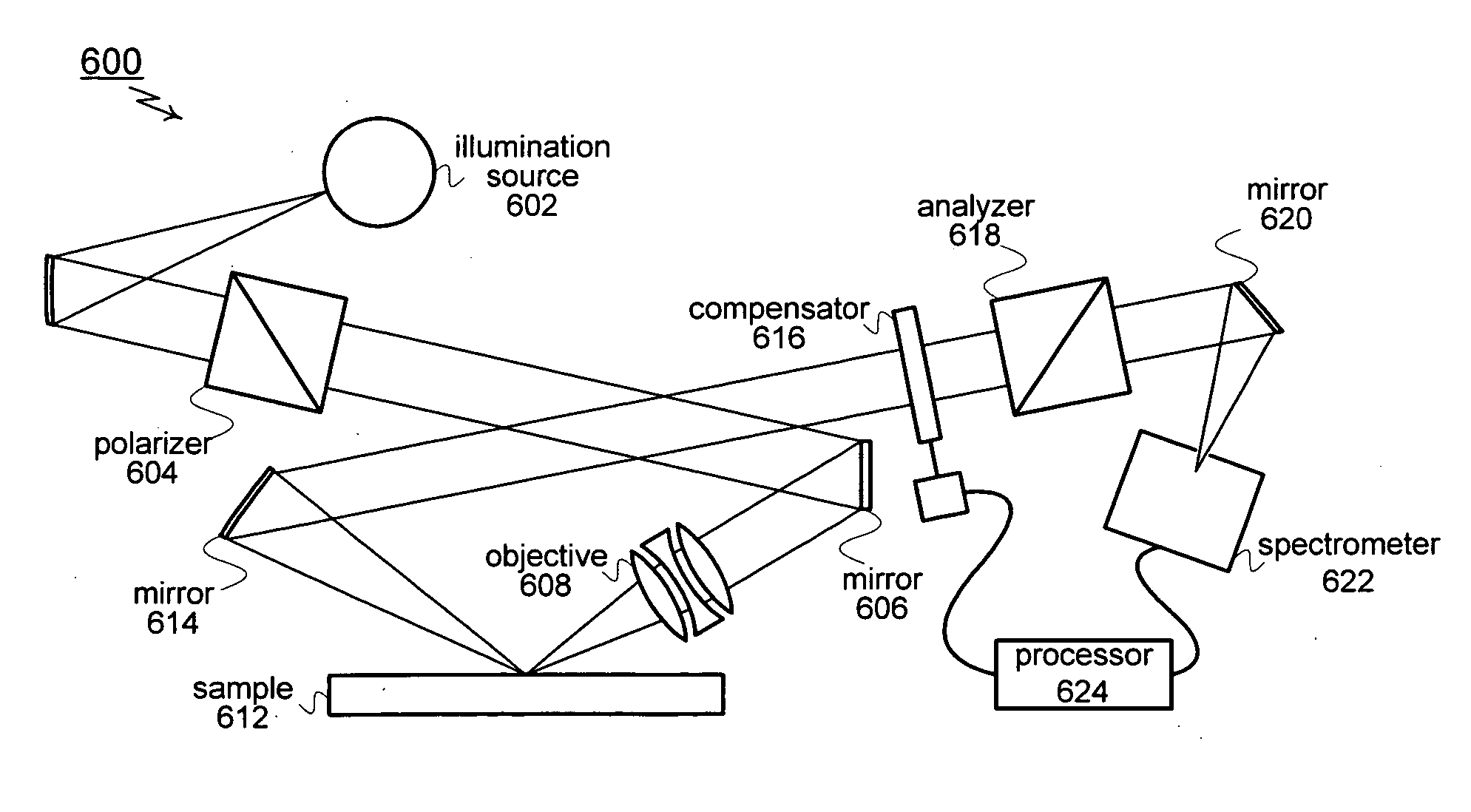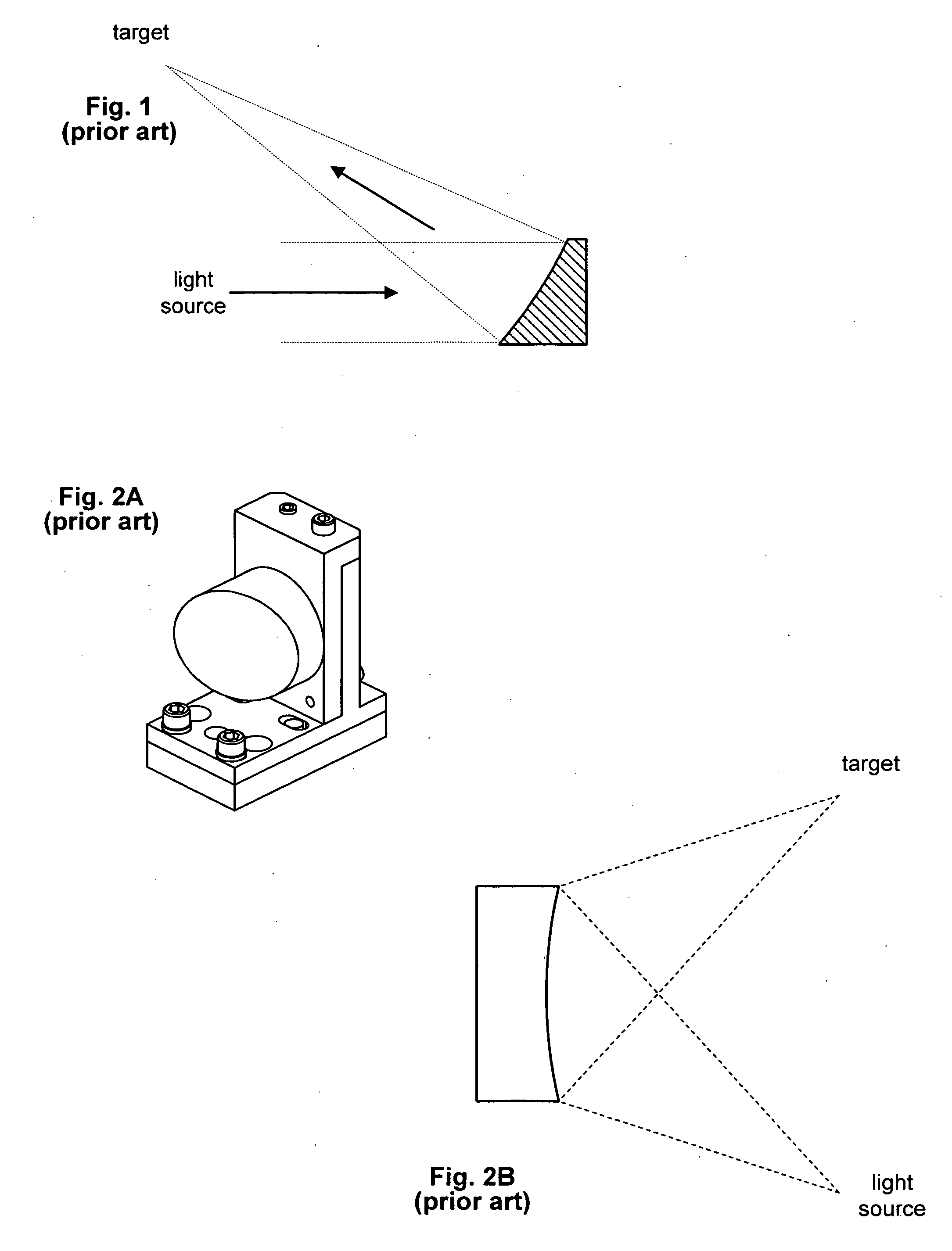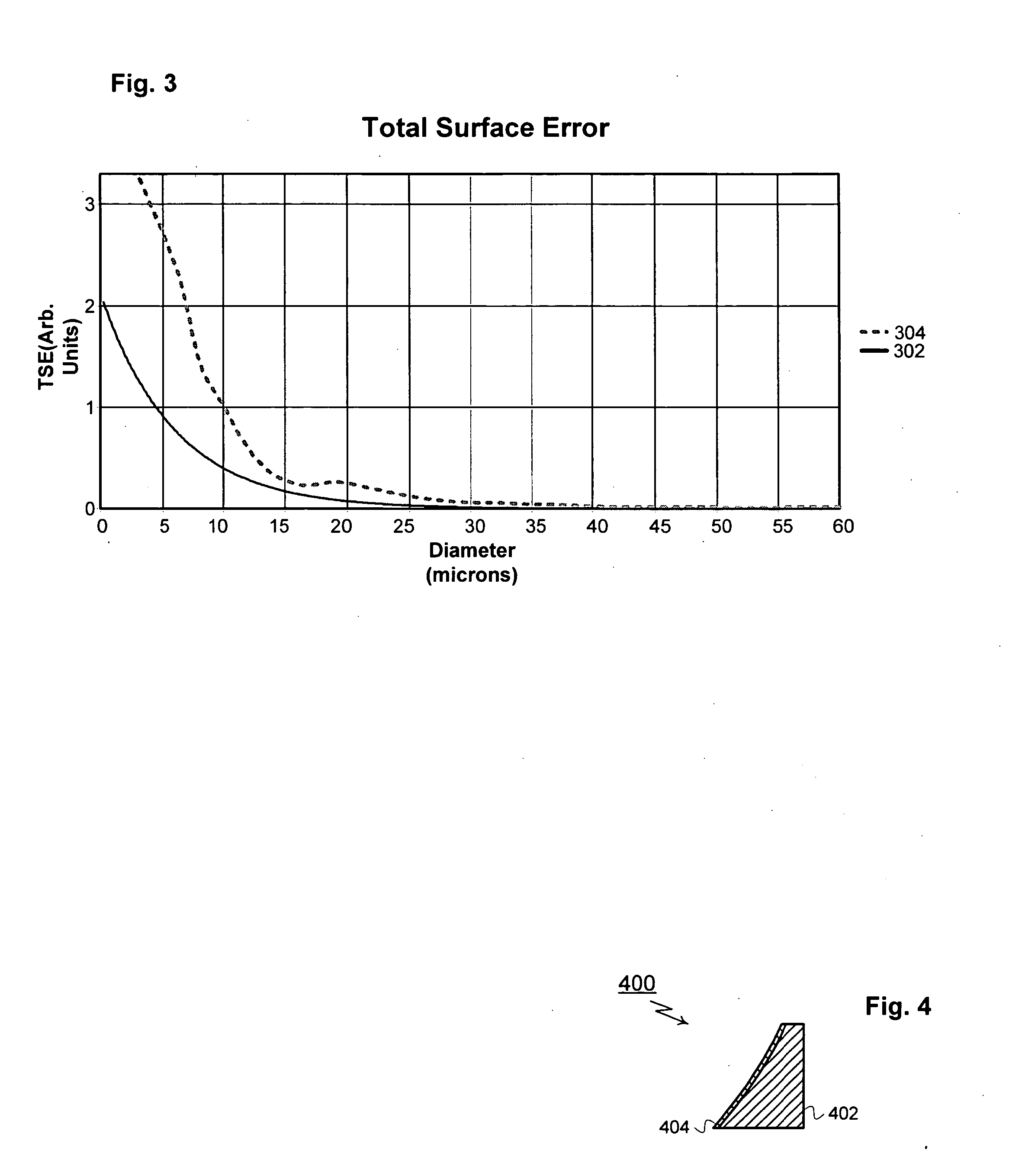Techniques for reducing optical noise in metrology systems
a metrology system and optical noise technology, applied in the field of optical devices, can solve the problems of light scattering away from its intended path, scattering and distortion becoming increasingly problematic, and potential sources of optical scattering and distortion, so as to improve the performance of metrology instruments, improve the performance of metrology systems, and reduce scattering light
- Summary
- Abstract
- Description
- Claims
- Application Information
AI Technical Summary
Benefits of technology
Problems solved by technology
Method used
Image
Examples
Embodiment Construction
[0029] The present invention provides a method for increasing the accuracy of optical metrology tools. For this method, low scatter mirrors are produced using one of the fabrication methods discussed below. The low scatter mirrors are used in place of traditional optics to reduce optical noise. In turn, this allows measurement accuracy to be increased while maintaining or decreasing measurement spot size.
[0030] To characterize mirror quality, a measurement of encircled energy is used. In the case of an off-axis parabolic mirror, this measurement is obtained by first illuminating the mirror surface with a collimated beam. Once illuminated, the encircled energy.value (or fractional energy value) is measured at focus, and at increasingly larger distances from focus relative to an infinitely large encircled energy diameter including 100% of the incident energy. The encircle energy is used to define a metric that is referred to as Total Surface Error or TSE. TSE is defined in terms of d...
PUM
 Login to View More
Login to View More Abstract
Description
Claims
Application Information
 Login to View More
Login to View More - R&D
- Intellectual Property
- Life Sciences
- Materials
- Tech Scout
- Unparalleled Data Quality
- Higher Quality Content
- 60% Fewer Hallucinations
Browse by: Latest US Patents, China's latest patents, Technical Efficacy Thesaurus, Application Domain, Technology Topic, Popular Technical Reports.
© 2025 PatSnap. All rights reserved.Legal|Privacy policy|Modern Slavery Act Transparency Statement|Sitemap|About US| Contact US: help@patsnap.com



